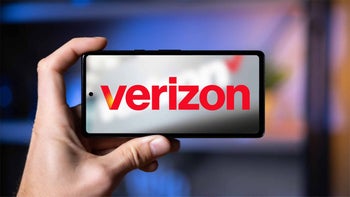HERE WeGo! Watch Verizon's 5G phones make your car self-driving and locate you for Uber

If you ever found yourself wanting more than Google Maps' measly offline navigation area downloads. you've no doubt stumbled upon the HERE WeGo app that sprung from Nokia's fateful attempt to pour a lot of money into street-mapping and 3D-rendered buildings before Google Maps was cool.
It may not be free for Verizon, though, but the carrier obviously saw the potential, and is teaming up with HERE Technologies on detailed navigation that will be made possible by its budding 5G network for mobile, automotive, fleet management and other purposes.
The potential of this multiyear partnership was already demonstrated at CES 2020 by a vehicle-mounted handset that can make your car behave like a self-driving one, i.e. detect pedestrians, other cars, and obstacles on the road.
This vehicle-to-network system is made possible by leveraging Verizon’s 5G-lined streets and pairing the fast communication grid with HERE Tech’s Live Sense SDK via said phone in the car, as you can see in the proof-of-concept video above. In addition:
HERE will be providing Verizon with access to a range of location data, SDKs, and APIs from the HERE platform. Verizon and HERE are also planning to develop new connected services to benefit a range of industries, from automotive to smart cities, to transport and logistics. The collaboration will initially focus on two proofs of concept:
Collision Avoidance is intended to increase pedestrian and driver safety by combining Verizon’s 5G Ultra-Wideband capabilities with HERE’s HD Live Map and Live Sense computer vision technology to create a vehicle-to-network (V2N) communication system. HERE’s Live Sense SDK identifies vehicles, pedestrians, bicycles, etc. and barriers from a vehicle-mounted mobile phone. This data will then be sent to Verizon’s 5G Edge, where the Collision Avoidance AI predicts likely travel paths and warns vehicles of impending potential collisions.
Collision Avoidance is intended to increase pedestrian and driver safety by combining Verizon’s 5G Ultra-Wideband capabilities with HERE’s HD Live Map and Live Sense computer vision technology to create a vehicle-to-network (V2N) communication system. HERE’s Live Sense SDK identifies vehicles, pedestrians, bicycles, etc. and barriers from a vehicle-mounted mobile phone. This data will then be sent to Verizon’s 5G Edge, where the Collision Avoidance AI predicts likely travel paths and warns vehicles of impending potential collisions.
Visual Positioning Service (VPS) is designed to enable near-instantaneous identification of a specific location with sub-meter accuracy using image capture. Proprietary 3D positioning algorithms from HERE analyze images or videos for accurate positioning, which occurs in near real-time via Verizon’s 5G Ultra-Wideband network and 5G Edge. VPS is a complementary solution to signal-based location technologies, such as GPS, because it does not rely on a remote server and is less hindered by tall buildings or signal deserts. The technology is also adaptable for indoor use.
We can't wait to see what subscriber-centric goodies will come out of this B2B partnership between Verizon's award-winning 5G network of numerous small sites and HERE's best-in-class navigation technology. CES 2020 is already shaping up to be way more exciting this year than what it has been in the past few.
Oh, Verizon's partnership with HERE can also locate your passenger for you, Uber drivers, how's that for a futureproof technology?

Follow us on Google News














Things that are NOT allowed:
To help keep our community safe and free from spam, we apply temporary limits to newly created accounts: